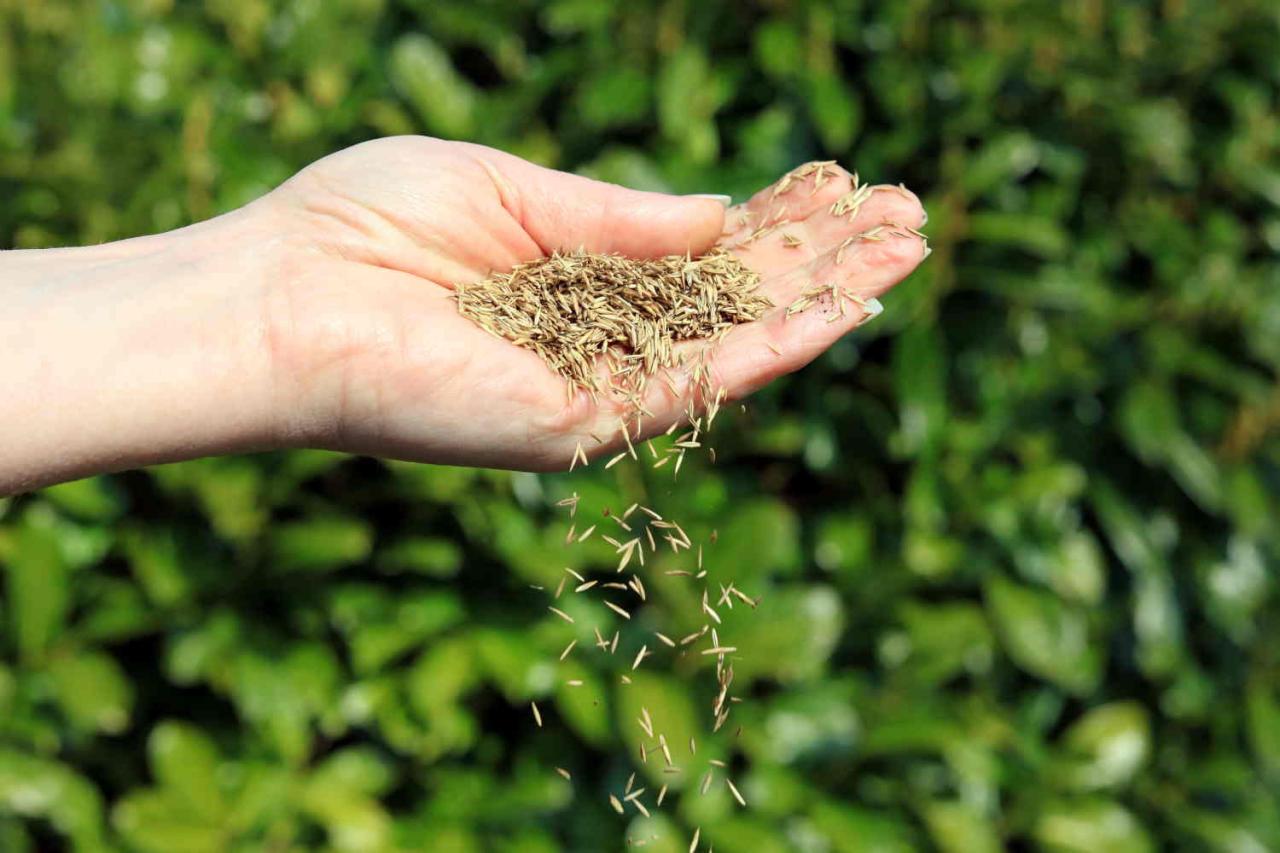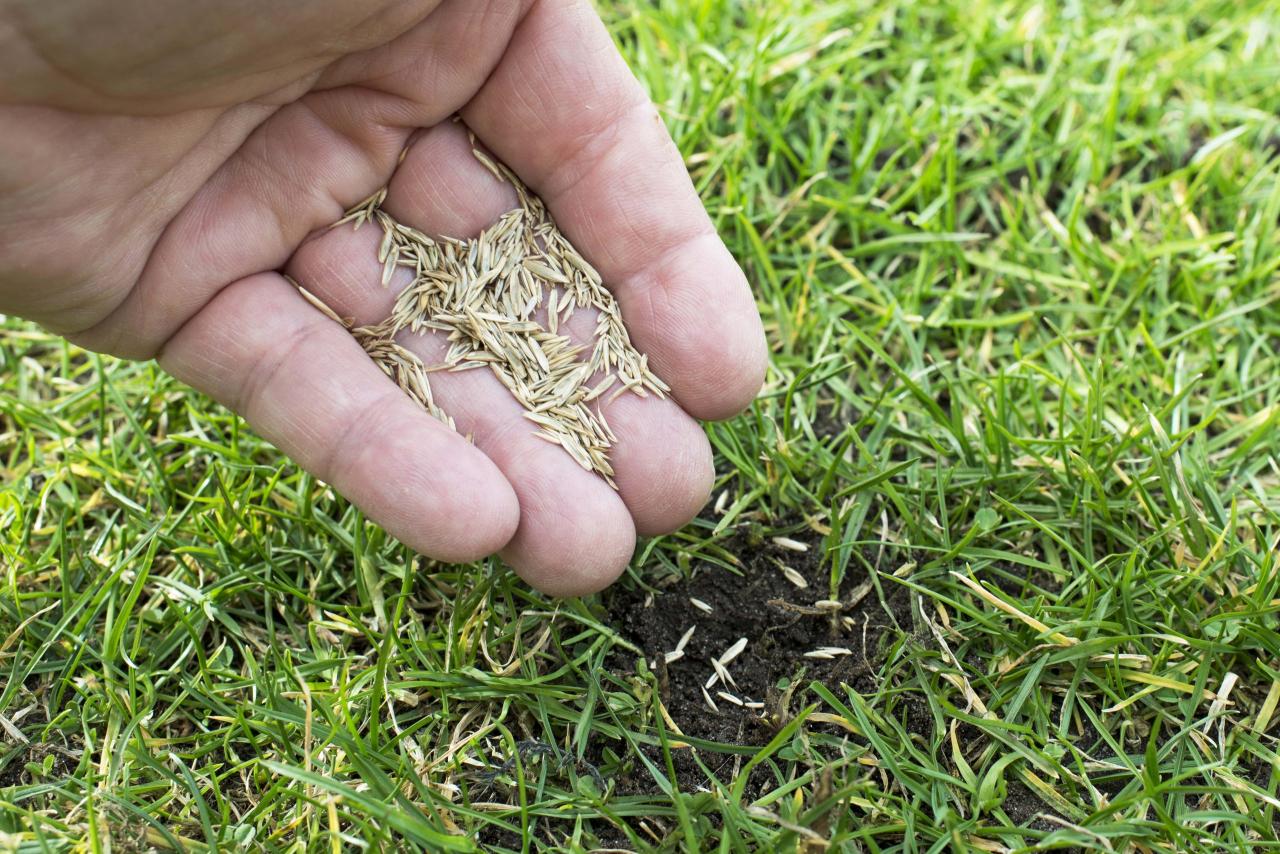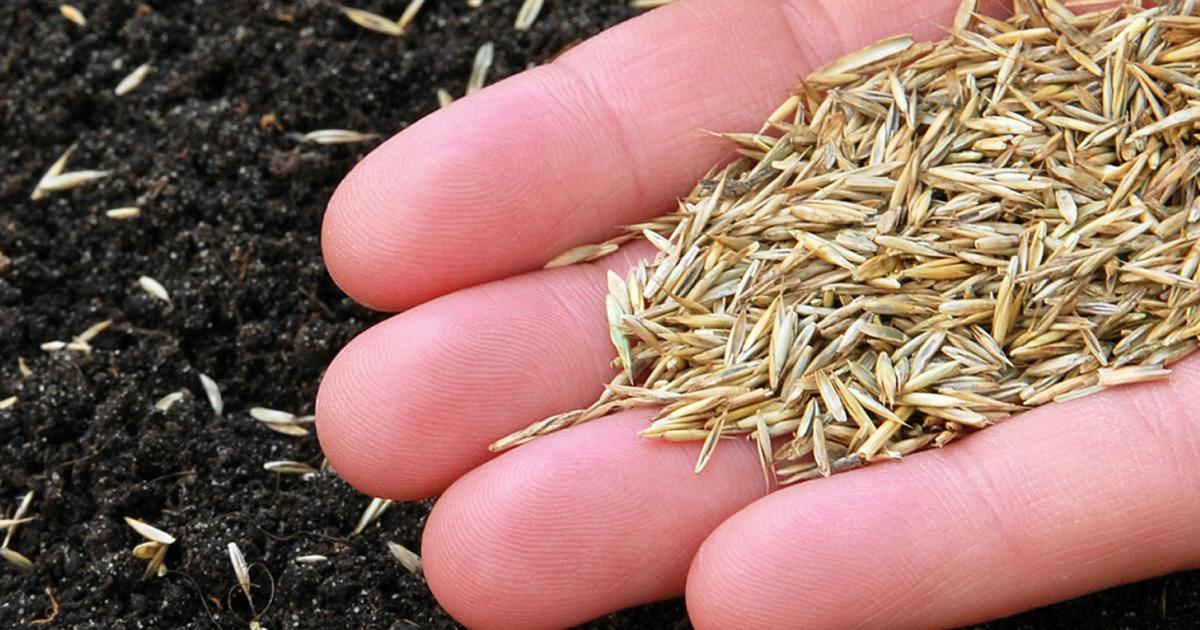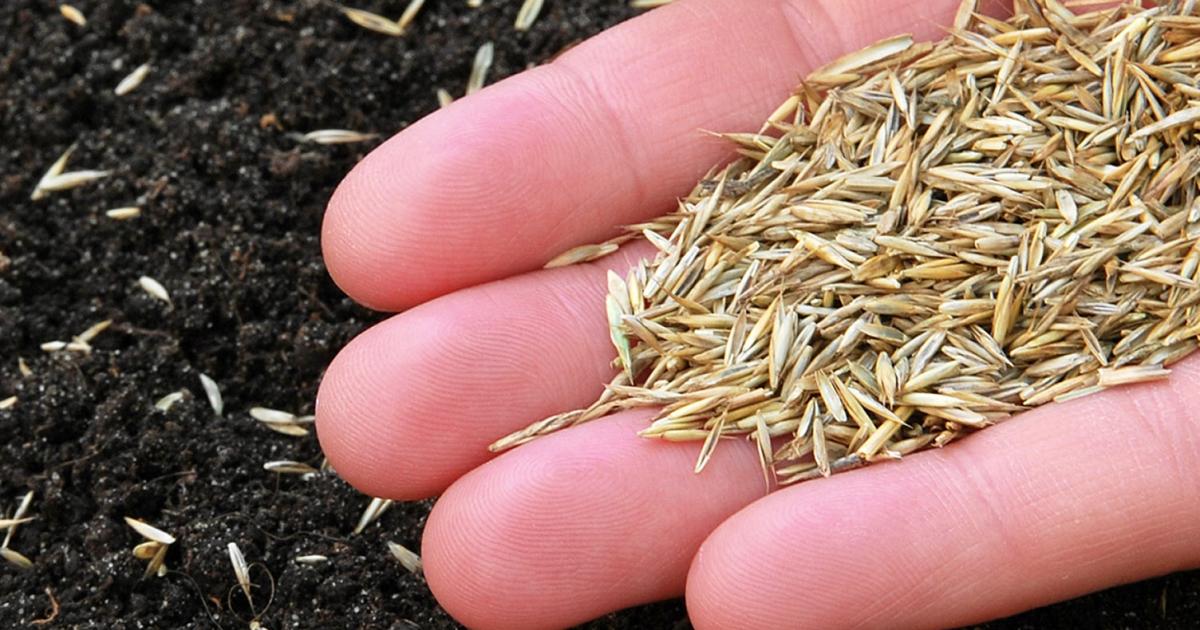When to Sow Grass Seed in the UK: Top Seasonal Tips for a Healthy Lawn – achieving a lush, green lawn in the UK requires understanding the optimal times for sowing grass seed. The UK’s climate offers two primary seeding seasons, each with its own advantages and disadvantages.
By choosing the right time, preparing your soil, and selecting the appropriate grass seed, you can set the stage for a thriving lawn that enhances your outdoor space.
This guide delves into the intricacies of grass seeding in the UK, providing a comprehensive overview of the ideal time to sow, essential soil preparation techniques, and the best grass seed choices for various lawn types. We’ll also explore effective seeding methods, post-seeding care practices, and solutions for common seeding challenges, empowering you to cultivate a healthy and beautiful lawn.
Understanding the Ideal Time for Grass Seeding in the UK
The best time to sow grass seed in the UK is determined by the weather conditions and the specific type of grass you are planting. While the general rule is to sow in spring or autumn, the ideal timing can vary significantly depending on your location and the type of grass you’re hoping to establish.
Optimal Seeding Periods in the UK
There are two primary grass seeding seasons in the UK: spring and autumn. Each season offers distinct advantages and disadvantages, influencing the success of your lawn establishment.
- Spring Seeding: The ideal time for spring seeding is typically between March and May. The soil is warming up, and there is sufficient moisture for seed germination and growth. This period provides a longer growing season, allowing the grass to establish a strong root system before the summer heat arrives.
However, spring seeding can be susceptible to late frosts and dry spells, potentially hindering germination and seedling development.
- Autumn Seeding: Autumn seeding is often considered the best time for establishing a new lawn in the UK. The ideal period is typically between September and October. The soil is still warm enough for germination, and the cooler temperatures and increased rainfall create ideal conditions for root development.
Autumn-sown grass benefits from the milder weather and ample moisture, leading to a healthy and lush lawn by the following spring. However, autumn seeding can be affected by harsh winter conditions, potentially delaying establishment.
Regional Variations in Seeding Times
The ideal seeding periods can vary across different regions within the UK, influenced by factors like climate and soil type.
Region |
Ideal Seeding Period |
Climate and Soil Type |
|---|---|---|
South-East England |
March
|
Mild climate, well-drained soils |
South-West England |
March
|
Mild climate, well-drained soils |
North-East England |
April
|
Cooler climate, heavier soils |
North-West England |
April
|
Cooler climate, heavier soils |
Scotland |
May
|
Cooler climate, wetter conditions |
Wales |
April
|
Moderate climate, varying soil types |
For best results, it is recommended to consult a local garden center or lawn care professional for advice on the optimal seeding time for your specific location and soil conditions.
Preparing Your Lawn for Seeding

A well-prepared lawn is crucial for successful grass seed germination and establishment. Before sowing your seed, it’s essential to create the optimal conditions for your new grass to thrive. This involves assessing your soil’s health and preparing it for the new seeds.
Soil Testing
Soil testing is a vital first step in preparing your lawn for seeding. This helps determine the pH level, nutrient content, and soil structure, providing valuable insights into your lawn’s health and any potential issues. You can purchase soil testing kits from garden centers or online retailers, or send a sample to a laboratory for analysis.
- pH Level:The ideal pH range for most grasses is between 6.0 and 7.0. If your soil is too acidic (below 6.0), you can amend it with lime. Conversely, if your soil is too alkaline (above 7.0), you can add sulfur.
- Nutrient Content:A soil test will reveal the levels of essential nutrients like nitrogen, phosphorus, and potassium. If your soil lacks these nutrients, you can use a fertilizer to supplement them.
- Soil Structure:The test will also assess the soil’s texture, compaction, and drainage. Compacted soil hinders root growth, while poor drainage can lead to waterlogging.
Preparing the Lawn Surface
Once you have the soil test results, you can begin preparing the lawn surface for seeding. This involves removing weeds, aerating the soil, and leveling the surface.
- Weed Removal:Existing weeds compete with new grass seedlings for nutrients and water. You can remove weeds manually by hand-pulling or using a hoe. Alternatively, you can apply a pre-emergent herbicide to prevent weed seeds from germinating.
- Aeration:Aerating the soil improves drainage and allows air and nutrients to reach the roots. You can aerate your lawn using a core aerator, which removes small plugs of soil.
- Leveling the Surface:An uneven lawn surface can hinder seed germination and lead to uneven growth. You can level the surface by adding topsoil to low areas or removing excess soil from high areas.
Choosing the Right Grass Seed
Selecting the right grass seed is crucial for achieving a healthy and thriving lawn in the UK. Different grass types possess varying characteristics, influencing their suitability for different lawn types and purposes. Understanding these differences is essential for choosing the best seed for your specific needs.
Factors to Consider When Choosing Grass Seed
Several factors determine the best grass seed for your lawn, including the amount of shade, foot traffic, and desired appearance.
- Shade Tolerance:If your lawn receives significant shade, consider grass varieties known for their ability to thrive in low-light conditions. These include fine fescues ( Festucaspp.) and perennial ryegrass ( Lolium perenne). These grasses tolerate shade better than others, offering a lush green appearance even in shaded areas.
- Foot Traffic:For areas experiencing high foot traffic, such as family lawns or play areas, choose grass seed varieties known for their durability and resilience. Perennial ryegrass is a popular choice due to its fast growth rate and ability to withstand wear and tear.
- Desired Appearance:Consider the desired appearance of your lawn when choosing grass seed. If you prefer a fine-bladed, lush green lawn, fine fescues might be suitable. For a coarser texture, perennial ryegrass or a blend of different grass types could be a better choice.
Best Grass Seed Options for Different Lawn Types
Here’s a table outlining the best grass seed options for various lawn types:
Lawn Type |
Recommended Grass Seed |
Benefits |
|---|---|---|
Family Lawns with Children |
Perennial ryegrass, a blend of perennial ryegrass and fine fescues |
Fast-growing, durable, and wear-resistant, suitable for play areas. Fine fescues offer shade tolerance and a lush green appearance. |
Lawns for Pets |
Perennial ryegrass, a blend of perennial ryegrass and fine fescues |
Durable and resilient, tolerates wear and tear from pets. Fine fescues offer shade tolerance and a lush green appearance. |
Low-Maintenance Lawns |
Fine fescues, a blend of fine fescues and perennial ryegrass |
Require less mowing and watering, tolerate shade, and provide a lush green appearance. |
Seeding Techniques and Best Practices

Once you’ve prepared your lawn and chosen the right grass seed, the next step is to sow it effectively. Proper seeding techniques are crucial for achieving a thick, healthy lawn. Here’s a detailed guide on how to do it right.
Methods for Seeding
There are three main methods for sowing grass seed: broadcasting, overseeding, and using a seed spreader.
- Broadcastinginvolves scattering seed by hand over the prepared area. This method is best for smaller lawns and areas with minimal obstacles. It’s important to ensure even distribution by walking back and forth across the lawn, overlapping each pass slightly.
- Overseedingis used to thicken an existing lawn by scattering seed over the top of the existing turf. This method is ideal for areas with patchy grass or where you want to introduce a new variety of grass. It’s best done in the early fall or spring when the existing grass is actively growing.
- Using a seed spreaderis the most efficient and precise method for larger lawns. Seed spreaders distribute seed evenly and at the correct rate, ensuring consistent coverage. This method is also helpful for achieving a more precise seeding density, which is crucial for optimal lawn growth.
Sowing Grass Seed Effectively, When to Sow Grass Seed in the UK: Top Seasonal Tips for a Healthy Lawn
Regardless of the method used, there are several best practices to follow for successful grass seeding.
- Seeding densityis crucial for achieving a thick, healthy lawn. Too much seed can lead to overcrowding and competition, while too little seed can result in a patchy lawn. The recommended seeding density varies depending on the type of grass seed and the size of the lawn.
Generally, 1-2 pounds of seed per 1,000 square feet is a good starting point.
- Seeding depthis equally important. Grass seed needs to be in contact with the soil to germinate, but it should not be buried too deeply. The ideal seeding depth is 1/4 to 1/2 inch. This can be achieved by lightly raking the soil after broadcasting or using a seed spreader with a depth adjustment.
- Wateringis crucial for seed germination and establishment. Keep the soil consistently moist, but not soggy. Water lightly and frequently, several times a day for the first few weeks. Once the grass is established, you can reduce watering frequency. This ensures that the seeds have access to moisture and can germinate and develop roots.
- Protect the new seedlingsfrom birds and other animals. You can use netting or bird deterrents to prevent them from digging up the seed. This protects the new seedlings from damage and allows them to establish properly. It’s also a good idea to avoid walking on the newly seeded area until the grass is established.
Tips for a Successful Lawn
- Test the soil pHbefore seeding. The ideal pH for most grasses is between 6.0 and 7.0. You can purchase a soil testing kit from a garden center or online. If the pH is too high or too low, you can adjust it with lime or sulfur, respectively.
- Consider using a starter fertilizerafter seeding. This will provide the young seedlings with the nutrients they need to grow strong roots. Apply a starter fertilizer according to the manufacturer’s instructions.
- Maintain a consistent watering schedule, especially during the first few weeks after seeding. This will help the grass establish a strong root system. Once the grass is established, you can gradually reduce watering frequency.
- Mow the grass regularlyonce it reaches a height of 2-3 inches. This will help promote healthy growth and prevent weeds from taking over.
- Avoid using herbicides or pesticideson the newly seeded lawn. These chemicals can harm the young seedlings and prevent them from establishing.
Post-Seeding Care for a Healthy Lawn

The initial weeks after seeding are crucial for the establishment of a strong and healthy lawn. During this phase, the new grass seedlings are particularly vulnerable and require careful attention to ensure their survival and growth.
Watering
Regular and consistent watering is essential for the new grass to thrive. The soil should be kept consistently moist, but not waterlogged.
- Water deeply and infrequently, allowing the water to penetrate the soil to a depth of 4-6 inches.
- Aim for 1-2 inches of water per week, depending on weather conditions and soil type.
- Avoid shallow watering, which can lead to shallow root development and increased susceptibility to drought.
Fertilizing
Fertilizer provides the new grass seedlings with essential nutrients for healthy growth.
- Apply a starter fertilizer specifically formulated for new lawns.
- Avoid high-nitrogen fertilizers, as they can burn the delicate seedlings.
- Follow the fertilizer label instructions carefully, as over-fertilizing can harm the grass.
Mowing
Mowing is an important aspect of lawn care, but it should be delayed until the new grass reaches a height of 2-3 inches.
- Initially, mow only the top third of the grass blades.
- Gradually increase the mowing height as the lawn matures.
- Use a sharp mower blade to prevent tearing or damaging the grass blades.
Protecting from Pests and Diseases
New lawns are susceptible to pests and diseases, which can weaken the seedlings and hinder their growth.
- Regularly inspect the lawn for signs of pests and diseases, such as discoloration, wilting, or insect activity.
- Control pests and diseases promptly using appropriate methods, such as organic insecticides or fungicides.
- Avoid overwatering, as it can create favorable conditions for fungal diseases.
Preventing Weeds
Weeds can compete with the new grass for nutrients, water, and sunlight, hindering their growth.
- Remove existing weeds before seeding to prevent them from competing with the new grass.
- Use a pre-emergent herbicide to prevent weed seeds from germinating.
- Hand-pull weeds that do emerge, being careful not to damage the new grass seedlings.
Troubleshooting Common Grass Seeding Issues
Even with meticulous planning and execution, grass seeding can sometimes encounter challenges. Understanding common problems and their solutions is crucial for achieving a lush and healthy lawn. This section delves into the most frequent issues faced during the grass seeding process, providing practical tips and preventive measures to ensure a successful outcome.
Poor Germination
Poor germination is a common problem encountered during grass seeding, resulting in sparse or patchy growth. Several factors can contribute to this issue, including:* Incorrect Seeding Depth:Grass seeds need to be planted at the appropriate depth for optimal germination. If sown too deep, the seeds may not have enough energy to reach the surface, leading to poor germination.
Conversely, if sown too shallow, the seeds can dry out, resulting in a similar outcome.
Improper Soil Moisture
Grass seeds require adequate moisture to germinate. Insufficient watering can prevent the seeds from sprouting, while excessive watering can lead to waterlogging, hindering root development and causing seed rot.
Soil Compaction
Compacted soil restricts root growth and inhibits water penetration, creating an unfavorable environment for seed germination.
Poor Soil Quality
Lack of nutrients, especially phosphorus, can negatively impact seed germination. Additionally, soil pH outside the optimal range for the chosen grass species can affect seed viability.
Bird Damage
Birds can be attracted to newly sown seeds, leading to significant seed loss and impacting germination rates.
Pest Infestations
Insects and other pests can damage seeds or seedlings, reducing germination and growth.To address poor germination, consider the following solutions:* Ensure Proper Seeding Depth:Follow the recommended seeding depth for the chosen grass type. Generally, most grass seeds should be sown about 1/4 inch deep.
Maintain Consistent Soil Moisture
Water the seedbed regularly to keep the soil moist but not waterlogged. Apply a light misting several times a day, especially during hot weather.
Improve Soil Drainage
If soil compaction is a concern, aerate the lawn to improve drainage and root growth.
Amend Soil Quality
Test the soil pH and amend it as needed to achieve the optimal range for the chosen grass species. Apply a balanced fertilizer containing phosphorus to enhance seed germination.
Protect Seeds from Birds
Use bird netting or other protective measures to deter birds from feeding on the seeds.
Control Pests
Treat any insect or pest infestations promptly to prevent damage to seeds and seedlings.
Uneven Growth
Uneven growth is another common challenge faced during grass seeding, resulting in a patchy lawn with areas of lush growth alongside thin or bare patches. This issue can arise from various factors, including:* Uneven Seed Distribution:Inconsistent seeding rates or uneven distribution of seeds can lead to uneven growth.
Poor Soil Preparation
Uneven soil levels, compacted areas, or inconsistent soil fertility can create uneven conditions for seed germination and growth.
Insufficient Watering
Uneven watering can lead to uneven growth, with areas receiving more water exhibiting faster growth than those with less moisture.
Shade
Areas with excessive shade may receive less sunlight, hindering grass growth and leading to uneven development.To address uneven growth, consider the following solutions:* Ensure Even Seed Distribution:Use a spreader to distribute seeds evenly across the lawn. Overlap passes by about 50% to ensure adequate seed coverage.
When it comes to achieving a lush, vibrant lawn in the UK, understanding the optimal time to sow grass seed is crucial. For maximum growth and health, it’s essential to choose the right season, and for comprehensive guidance, consult this helpful resource: When to Sow Grass Seed in the UK for Maximum Growth and Health.
This resource will equip you with the knowledge to select the ideal time for sowing, ensuring your new lawn thrives throughout the year.
Prepare Soil Thoroughly
Rake the soil to level it and remove debris. Aerate compacted areas to improve drainage and root growth. Apply a balanced fertilizer to ensure consistent soil fertility.
Water Consistently
While establishing a lush green lawn is a priority for many UK gardeners, incorporating a touch of luck and prosperity can be achieved with a flourishing patch of four-leaf clovers. If you’re aiming for a thriving green space, you can learn how to cultivate these lucky charms by following the tips outlined in How to Achieve a Thriving Four Leaf Clover Garden for Prosperity.
Once your clover patch is established, you can ensure your lawn thrives by following the best practices for sowing grass seed in the UK, such as choosing the right seed type for your climate and soil conditions.
Water the seedbed evenly to maintain consistent soil moisture. Avoid overwatering or allowing the soil to dry out completely.
Address Shading
Trim or remove trees and shrubs that cast excessive shade on the lawn.
Weed Invasion
Weed invasion can be a significant problem for newly seeded lawns, competing with grass seedlings for nutrients, sunlight, and water. This issue can arise from several factors, including:* Existing Weed Seeds:Existing weed seeds in the soil can germinate and compete with grass seedlings for resources.
Poor Soil Preparation
Failure to remove existing weeds before seeding can result in a weed infestation.
Improper Seeding Depth
If seeds are sown too shallow, weed seeds may germinate faster, outcompeting the grass seedlings.
Insufficient Watering
Inadequate watering can lead to stress on grass seedlings, making them more susceptible to weed competition.To address weed invasion, consider the following solutions:* Pre-Emergent Herbicides:Apply a pre-emergent herbicide before seeding to prevent weed seeds from germinating.
Remove Existing Weeds
Manually remove existing weeds before seeding to reduce competition.
Proper Seed Depth
Sow seeds at the recommended depth to give grass seedlings a competitive advantage over weeds.
Maintain Consistent Soil Moisture
Water the seedbed regularly to promote healthy grass growth and minimize weed competition.
Ending Remarks: When To Sow Grass Seed In The UK: Top Seasonal Tips For A Healthy Lawn
Successfully sowing grass seed in the UK involves a combination of timing, preparation, and ongoing care. By understanding the ideal seeding periods for your region, preparing your soil effectively, selecting the right grass seed, and following proper seeding and post-seeding practices, you can create a thriving lawn that enhances your outdoor space and provides a beautiful backdrop for your home.
Remember, a little effort upfront can yield a rewarding and long-lasting result.
Query Resolution
What are the best types of grass seed for shady areas in the UK?
For shady areas, consider shade-tolerant grasses like fescues (fine fescue, chewings fescue, and hard fescue) or perennial ryegrass. These grasses can thrive in lower light conditions and create a lush, green lawn.
How often should I water newly seeded grass?
Newly seeded grass needs consistent moisture to germinate and establish. Water deeply and frequently, aiming for 1-2 inches of water per week. The soil should feel moist but not soggy.
When can I start mowing my new lawn?
Wait until the grass reaches a height of about 3 inches before mowing for the first time. Mow at a higher height (around 2-3 inches) to encourage deeper roots and a healthier lawn.
